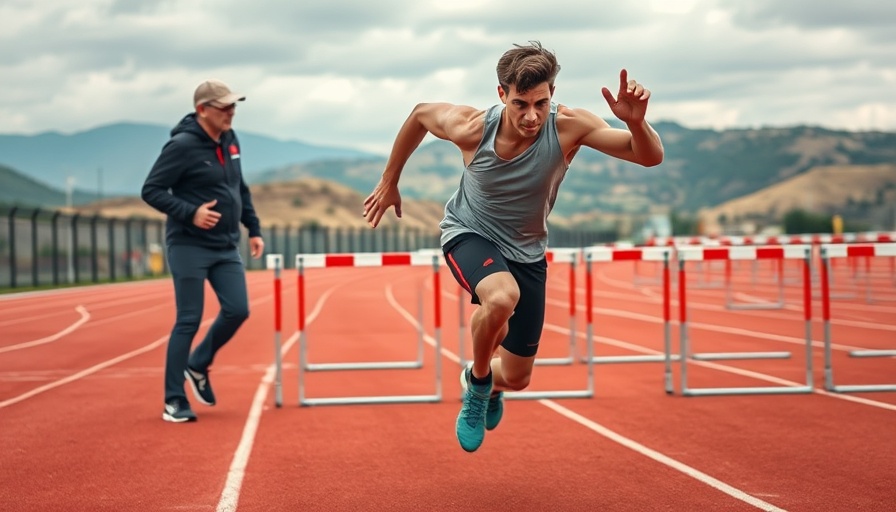
Understanding Takeoff Distance in Athletics
When athletes launch into the air or hit the track, understanding their takeoff distance is crucial for maximizing performance. This encompasses various sports disciplines such as gymnastics, track and field, and diving where takeoff distance directly correlates to potential success. The right technique combined with properly understood mechanics can lead to significant improvements.
In 'Fix Your Takeoff Distance Now', the discussion dives into techniques and insights that spark deeper analysis on how athletes can maximize their performance.
Why Takeoff Distance Matters
Takeoff distance is the distance an athlete covers before leaving the ground. In sports like long jump, triple jump, and pole vaulting, this distance often determines the athlete's success. For gymnasts, mastering takeoff from the springboard influences the height and rotation of their aerial skills. For every competitor, perfecting takeoff can minimize wasted energy and maximize performance output.
Common Mistakes That Affect Takeoff Distance
Many athletes make critical mistakes that lead to underperformance during takeoff. A frequent error is improper foot placement which can affect balance and power. Another issue is not utilizing the correct run-up speed; athletes sometimes fly in without gauging their velocity, leading to either overshooting or undershooting their target. Understanding these pitfalls is crucial for improvement.
Techniques to Improve Takeoff Distance
To improve takeoff distance, athletes can focus on several key areas:
- Optimal Foot Placement: Placing the foot at the right angle can increase propulsion.
- Speed Management: Finding the right balance between speed and control can yield better results.
- Strength Training: Building leg strength through focused workouts allows for a more powerful takeoff.
For instance, plyometric training, rotational exercises, and core strengthening contribute greatly to developing explosive power at takeoff.
The Role of Coaches in Enhancing Takeoff Techniques
Coaches play a pivotal role in refining athletes' takeoff techniques. A good coach can provide instant feedback, focusing on biomechanical adjustments that an athlete might miss. By analyzing performance through techniques like video analysis, coaches help identify areas for improvement, providing tailored drills that address individual needs.
Utilizing Technology for Better Performance
In today's sports world, technology increasingly informs coaching strategies. Wearable devices track speed, distance, and other metrics, enabling athletes and coaches to make data-driven decisions. Moreover, biomechanics software provides visual feedback on takeoff angles and velocities, optimizing training regimens. Integrating technology into training ensures athletes can elevate their performance based on scientific insights and tangible data.
Future Trends in Training for Takeoff Distance
As sports science evolves, the focus on explosive takeoff continues to grow. Athletes can expect new training methodologies emphasizing fluid motion, enhanced strength training techniques, and advanced sports psychology strategies to handle competitive pressure. Embracing these trends will not only transform individual performances but may also lead to new records in various disciplines.
Final Thoughts on Improving Takeoff Distance
The path to improving takeoff distance requires dedication, intelligence in training, and continuous refinement of technique. By maintaining a focus on proper mechanics and seeking assistance from knowledgeable coaches, athletes can master their takeoff, ensuring that every launch is their best. Optimize your performance now and see how far your efforts can take you!
 Add Row
Add Row  Add
Add 




Write A Comment